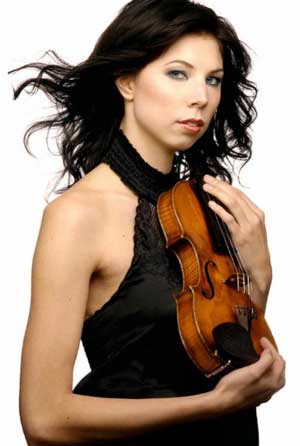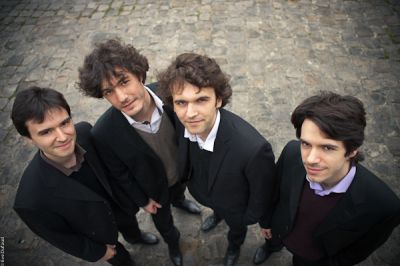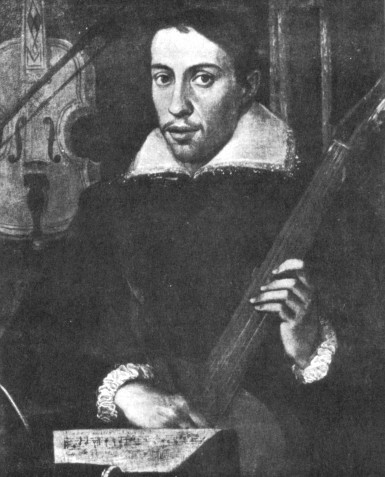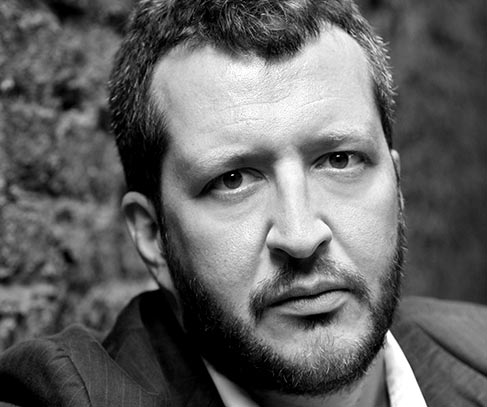Simone Dinnerstein at the Kennedy Center
By Stephen Brookes • The Washington Post • February 10, 2014
Deny it if you can — the pianist Simone Dinnerstein has a way with Bach. Her poetic, almost intimate interpretation of the Goldberg Variations shot her to prominence in 2007, and she has just released a disc of the Two-Part Inventions and Sinfonias to critical acclaim. So expectations were high on Sunday when Dinnerstein brought the 15 Inventions to the Kennedy Center Concert Hall — and her Bach was, in fact, often quite striking. But it may have been two more modern works on the program that really made the ears sit up and pay attention. Simone Dinnerstein The Two-Part Inventions are little miracles of counterpoint, written as teaching exercises but no less nuanced, multifaceted and rewarding because of it. Dinnerstein approached them confidently, at times even a bit brashly, highlighting the contrasts among them while knitting them into a coherent whole. But she never seemed to sink entirely into the music, and the results seesawed from beguiling (that lovely first Invention) and exalting (the warm, delicate fourth), to rushed and almost wooden (a dutiful sixth, a tangled seventh, a glittery and technically insecure eighth). By the end, despite moments of great beauty, it was hard to tell what Dinnerstein was after, exactly; and, given her usual insights into Bach, hard not to feel a bit disappointed.
Simone Dinnerstein The Two-Part Inventions are little miracles of counterpoint, written as teaching exercises but no less nuanced, multifaceted and rewarding because of it. Dinnerstein approached them confidently, at times even a bit brashly, highlighting the contrasts among them while knitting them into a coherent whole. But she never seemed to sink entirely into the music, and the results seesawed from beguiling (that lovely first Invention) and exalting (the warm, delicate fourth), to rushed and almost wooden (a dutiful sixth, a tangled seventh, a glittery and technically insecure eighth). By the end, despite moments of great beauty, it was hard to tell what Dinnerstein was after, exactly; and, given her usual insights into Bach, hard not to feel a bit disappointed.
Far more interesting, to these ears, was the opening work, “You Can’t Get There From Here,” by the gifted young composer Nico Muhly. A sort of meditation on memory, it draws on the Renaissance-era Fitzwilliam Virginal Book for musical ideas, alternating calm, pensive sections with others of sheer brute force. Dinnerstein premiered the work in 2012 and gets it to its bones, and over its 20-minute length she built it into a work of stately, almost majestic grandeur in a deeply impressive performance.
It was an ambitious program, and Dinnerstein closed it with one of the weightiest works in the repertoire — Beethoven’s Sonata No. 32 in C minor, Op. 111, whose fiery Maestoso was delivered close to room temperature but whose complex Arietta (the real heart of the work) was well thought-through and deeply involving. But the most instantly likable work of the afternoon may have been George Crumb’s 2002 “Eine Kleine Mitternachtmusik” (A Little Midnight Music). Built loosely on Thelonious Monk’s “Round Midnight,” it calls on the pianist to scrape the strings, play the soundboard like a percussion instrument and even vocalize, painting a nocturnal landscape of shadows, ritual and strange mysteries. Dinnerstein handled it all with aplomb — and a fine imaginative touch.
Sybarite5 at the Synagogue at Sixth and I
By Stephen Brookes • The Washington Post • February 9, 2014
Okay, hold on. Concerts of contemporary chamber music are supposed to be difficult, cerebral events, right? Attended by a handful of po-faced graybeards, half of whom sneak out at intermission? So what was with the packed house on Saturday night for Sybarite5, a string quintet that plays almost exclusively modern music? What was all that impassioned playing, those hard-driving rhythms, the blissed-out faces of the mostly young audience? And what about the cheering — the actual cheering — that filled the Sixth and I Historic Synagogue when the group returned onstage after intermission? Is this what modern music has come to? Genuine, spontaneous . . . excitement?
 Sara WhitneyWe can only hope. This cheerfully free-ranging ensemble (a string quartet, with added double bass) aimed its performance squarely at 21st-century ears, mixing new works from classical composers with Armenian folk songs, 1950s jazz by Dave Brubeck, the music of Radiohead, a bit of fluff from the pop band a-Ha, a snippet of Mozart and even an Argentinian tango or two. That kind of kitchen-sink eclecticism might sound a little contrived, but it made perfect sense in performance — maybe because of the visceral, even sensual expressiveness that the musicians of Sybarite5 brought to everything they played, and maybe because it was all — as violinist Sarah Whitney declared from the stage — “music we love.”
Sara WhitneyWe can only hope. This cheerfully free-ranging ensemble (a string quartet, with added double bass) aimed its performance squarely at 21st-century ears, mixing new works from classical composers with Armenian folk songs, 1950s jazz by Dave Brubeck, the music of Radiohead, a bit of fluff from the pop band a-Ha, a snippet of Mozart and even an Argentinian tango or two. That kind of kitchen-sink eclecticism might sound a little contrived, but it made perfect sense in performance — maybe because of the visceral, even sensual expressiveness that the musicians of Sybarite5 brought to everything they played, and maybe because it was all — as violinist Sarah Whitney declared from the stage — “music we love.”
In a program of serial high points, there were too many to mention. Piotr Szewczyk’s jazzy “The Rebel” opened the evening and set its driving, fast-paced tone, and among the new “classical” works, Dan Visconti’s bluesy evocation of a train wreck (“Black Bend”) and Shawn Conley’s warmly pulsing “Yann’s Flight” were particular standouts. Violinist Sami Merdinian led the ensemble in three steamy, tango-infused works by Astor Piazzolla, while Brubeck’s “Blue Rondo à la Turk,” a movement from Mozart’s Divertimento in B flat, K. 137, and the fiery Romanian gypsy song “Turceasca” (by Taraf De Haidouks) kept things moving in clever, unpredictable directions.
Some of the most moving, luminous moments of the evening came during the late Pete Seeger’s “Where Have All the Flowers Gone?” But it was the endlessly fascinating music of Radiohead that seemed to be at the real heart of the concert, with deft arrangements by Paul Sanho Kim of “Paranoid Android,” “Weird Fishes” and “Motion Picture Soundtrack” that married the power of the originals with a classical sensibility. An intriguing and hugely enjoyable evening in every way — and a standout in the Washington Performing Arts Society’s fine winter season.
Andreas Brantelid at the Phillips Collection
By Stephen Brookes • The Washington Post • February 3, 2014
Danish cellist Andreas Brantelid had only met pianist Gloria Chien the night before their recital together at the Phillips Collection on Sunday — but you’d never know it from the caliber of their performance. Brantelid, a rising star with a light touch and a gift for limpid, poetic phrasing, seemed to find a natural partnership with Chien throughout the afternoon, in a program that built from Schubert Lite to the elusive atmospherics of Debussy to a sweeping, big-boned sonata by Edvard Grieg. Schubert’s “Arpeggione” sonata, D. 821, is not, by any stretch, a work of stormy Romanticism; a cloud or two drifts through its azure skies, and that’s about it. But it’s awash in songlike beauty, and Brantelid brought it off with a kind of tenderness and unhurried sincerity that allowed the natural lyricism of the music to unfold. He took a more sensuous approach to Debussy’s dreamlike Sonata for cello and piano from 1915, bringing a precise touch to its chimerical sonorities and strange, perfumed savagery.
Schubert’s “Arpeggione” sonata, D. 821, is not, by any stretch, a work of stormy Romanticism; a cloud or two drifts through its azure skies, and that’s about it. But it’s awash in songlike beauty, and Brantelid brought it off with a kind of tenderness and unhurried sincerity that allowed the natural lyricism of the music to unfold. He took a more sensuous approach to Debussy’s dreamlike Sonata for cello and piano from 1915, bringing a precise touch to its chimerical sonorities and strange, perfumed savagery.
For all the charm and rich expressiveness of his playing, though, Brantelid never seemed to quite set the room on fire — until he reached the final work of the afternoon, Grieg’s Sonata in A minor. It’s a work of soaring, chest-bursting emotions, and Brantelid and Chien turned in a robust and exuberant reading, full of the sense of limitless space that Grieg seems to evoke. It won him a standing ovation, a fine end to the Washington debut of a gifted cellist not yet out of his 20s.
Quatuor Éclisses at the Phillips Collection
By Stephen Brookes • The Washington Post • January 27, 2014
The late, great Andrés Segovia once likened the classical guitar to “a small orchestra” for its huge range of coloristic effects. But it’s probably wise not to take the analogy too literally; the operative word here is “small,” and compared with an actual orchestra, the guitar has all the power of a bag of kittens. Transcribing big symphonic works to its delicate, miniaturist scale is fraught, as they say, with peril.
 But it can be done, as the Quatuor Éclisses, an engaging young guitar quartet out of Paris, proved Sunday afternoon at the Phillips Collection. Not a lot of music has been written expressly for four guitars, so the Éclisses turned to transcriptions of (mostly) orchestral works, from the operatic (the Overture to Rossini’s “Le siège de Corinthe”) to the baroque (a forgettable Telemann concerto and two movements from Bach’s Brandenburg Concerto No. 4) to the elaborate tone-painting of Saint-Saëns’s “La Danse Macabre.”
But it can be done, as the Quatuor Éclisses, an engaging young guitar quartet out of Paris, proved Sunday afternoon at the Phillips Collection. Not a lot of music has been written expressly for four guitars, so the Éclisses turned to transcriptions of (mostly) orchestral works, from the operatic (the Overture to Rossini’s “Le siège de Corinthe”) to the baroque (a forgettable Telemann concerto and two movements from Bach’s Brandenburg Concerto No. 4) to the elaborate tone-painting of Saint-Saëns’s “La Danse Macabre.”
To their credit, the musicians brought it off with polished charm and virtuosity. The Rossini was the least convincing work on the program, its episodic structure and quick shifts of tone not really adding up to much. But the Bach was a wonder of clarity and sure, unstoppable power. Every line of the complex counterpoint radiated electricity. It was balm for the ears and food for the mind.
It was in the French music of the afternoon, though, that the Éclisses turned in its most poetic and nuanced playing. Even the cliches were gorgeous (Debussy’s “Clair de Lune” shimmered with light, as ethereal as you’ve ever heard it), and the Saint-Saëns, with its famous dancing skeletons, was a blistering display of guitar techniques.
But to these ears, it was the Spanish-flavored “Alborada del gracioso” (from Ravel’s piano work “Miroirs”) that provided the most impressive music of the afternoon. It was a rich, sophisticated interpretation of this thoroughly ravishing work.
Dénes Várjon at the Phillips Collection
By Stephen Brookes • The Washington Post • January 20, 2014
The young Hungarian pianist Dénes Várjon — whose playing has been winning accolades lately, both in chamber performances and as a soloist — presented a program of largely Romantic-era music at the Phillips Collection on Sunday, and he left no doubt that he is a musician of unusual power. Aside from the immaculate technique and deft sense of phrasing, Várjon brought something far more rare — a tangible sense of character in virtually everything he played, with incisive and strikingly flavorful interpretations of Beethoven, Schumann and Bartók . Beethoven’s Sonata in A-flat Major, Op. 26, No. 12 opened the afternoon. It’s perhaps most famous for the somber funeral march at its core, and Várjon turned in a gripping reading of that shadow-filled movement — bleak at its heart but tinged with radiance — and set it vividly against the playful Scherzo and robust Allegro that frame it. He took an even more nuanced approach to Schumann’s “Fantasiestücke,” Op. 12, a collection of eight coloristic pieces that shift back and forth between dreamy and passionate. From the nocturnal “Des Abends” that opens the work, to the whimsical “Grillen” and the deeply felt “Ende vom Lied” that closes it, Várjon played with utter naturalness, almost as if improvising.
Beethoven’s Sonata in A-flat Major, Op. 26, No. 12 opened the afternoon. It’s perhaps most famous for the somber funeral march at its core, and Várjon turned in a gripping reading of that shadow-filled movement — bleak at its heart but tinged with radiance — and set it vividly against the playful Scherzo and robust Allegro that frame it. He took an even more nuanced approach to Schumann’s “Fantasiestücke,” Op. 12, a collection of eight coloristic pieces that shift back and forth between dreamy and passionate. From the nocturnal “Des Abends” that opens the work, to the whimsical “Grillen” and the deeply felt “Ende vom Lied” that closes it, Várjon played with utter naturalness, almost as if improvising.
It was in the middle works of the afternoon — by his fellow Hungarian, Bela Bartók — that the pianist seemed to really come into his own. The early, dark-toned Two Elegies, Op. 8b are expressive and often richly chromatic works, falling somewhere between romanticism and impressionism and shot through with the torments of love. (Bartók wrote one elegy after losing his first love and the next after getting married to someone else; make of that what you will.) Várjon played these intimate cris de coeur as if straight from his own heart — an intense, revelatory performance that he followed with Bartók’s engaging Sonatina and eight pieces from “15 Hungarian Peasant Songs.”
Parker Quartet at the Library of Congress
By Stephen Brookes • The Washington Post • December 19, 2013
The Library of Congress is more than a little proud of its historical musical instruments, particularly the violins, violas and cellos made by Antonio Stradivari at the turn of the 18th century. It’s a rare treat to hear them played, and rarer still to hear five of them together — which may account for the crowds that jammed Coolidge Auditorium on Wednesday night for the “Antonio Stradivari Anniversary Concert,” when the Parker Quartet (with guest violist Kikuei Ikeda) presented a program that highlighted the instruments’ distinctively warm and engaging sound. Antonio StradivariBut it was the playing, rather than the celebrity instruments, that really impressed. The Parker opened with Mendelssohn’s String Quartet No. 3 in D, and while it may not be the composer’s most interesting work — it’s pleasant, well-mannered and agreeable to a fault — the ensemble’s exceptional virtuosity was clear right out of the gate, with violinists Daniel Chong and Ying Xue leading a playful, fast-paced and imaginative interpretation.
Antonio StradivariBut it was the playing, rather than the celebrity instruments, that really impressed. The Parker opened with Mendelssohn’s String Quartet No. 3 in D, and while it may not be the composer’s most interesting work — it’s pleasant, well-mannered and agreeable to a fault — the ensemble’s exceptional virtuosity was clear right out of the gate, with violinists Daniel Chong and Ying Xue leading a playful, fast-paced and imaginative interpretation.
The tone quickly shifted with Dmitri Shostakovich’s troubling and enigmatic String Quartet No. 9, and the contrast with Mendelssohn could not have been more stark. Biting, complex and intensely personal, this is music steeped in dread — the whole waking nightmare that Shostakovich endured — and the Parker brought it off with quiet, probing intelligence. Subdued rather than edgy, it may have been a bit too soft around the edges to satisfy hard-core Shostakovich-ians; it depends on how straight you take your angst.
Angst was nowhere to be found in the closing work, the rapturous String Quintet in E-flat, Op. 97, by Antonin Dvorak, which he wrote on holiday in Iowa in the summer of 1893. Dvorak said he was out to write “something really melodious and simple,” and he inarguably succeeded. The work (for which the Parker players were joined by Ikeda, of the illustrious Tokyo Quartet) floats by like a sunny summer day, smiling and open-hearted, surging with uplifting melodies and an unshakable conviction that all is well with the world. The players gave it a warm, affectionate and suitably untroubled reading.
Calder String Quartet at the Phillips Collection
By Stephen Brookes • The Washington Post • November 25, 2013
Okay, so when did string quartets start getting so hip? The ultra-cool Brooklyn Rider quartet was in town Saturday night, and on Sunday afternoon the equally adventurous Calder Quartet — which has teamed with rock bands such as The National and Dirty Projectors, and been featured on David Letterman’s and Conan O’Brien’s shows — put on a high-octane performance at the Phillips Collection. But it wasn’t quite the daring program you might have expected; in fact, the Calder kept well to the center lane, balancing angst-ridden Bartok with Schubert’s warmly familiar “Death and the Maiden” quartet, and offering only one piece of music from the past 20 years.
 Thomas AdèsBut what a piece it was. The British composer Thomas Adès was in his early 20s when he wrote the stunning “Arcadiana” (1994), and it is indisputably a masterpiece. Made up of seven short “snapshots of paradise” (as Calder violinist Andrew Bulbrook put it), the work comes off as a kind of luminous dreamscape, awash in echoes and shadows and wisps of memory that drift in and out of hearing. It’s all nuance and subtle suggestion, full of inventive writing and evocations of composers from Mozart to Elgar. Not an easy work to bring off, in other words — but Calder found a solid dramatic core that tied the atmospherics together, and by the end you wanted to go out and listen to everything by Adès you could find.
Thomas AdèsBut what a piece it was. The British composer Thomas Adès was in his early 20s when he wrote the stunning “Arcadiana” (1994), and it is indisputably a masterpiece. Made up of seven short “snapshots of paradise” (as Calder violinist Andrew Bulbrook put it), the work comes off as a kind of luminous dreamscape, awash in echoes and shadows and wisps of memory that drift in and out of hearing. It’s all nuance and subtle suggestion, full of inventive writing and evocations of composers from Mozart to Elgar. Not an easy work to bring off, in other words — but Calder found a solid dramatic core that tied the atmospherics together, and by the end you wanted to go out and listen to everything by Adès you could find.
Bartok’s String Quartet No. 2 was written in the darkest years of World War I, and from the opening notes it’s clear you’re hearing the sound of a world falling apart. A chilling sense of tragedy runs through it — even the jaunty “Allegro molto capriccioso” gives most ears the creeping jimjams — and it closes with a slow lament that sounds like music from the end of the Earth. The Calder gave it an insightful reading, and its lean, astringent sound fit the work beautifully. But it was a rather measured performance as well, even a bit withheld, and despite the sharpness of Bartok’s bite, it never seemed to quite draw blood.
The heat returned, though, in Schubert’s scorching String Quartet No. 14 in D minor, D. 810 (“Death and the Maiden”). For an old warhorse, it still packs a serious kick, and the Calder players took a fresh, modern look at the work, paring away much of the voluptuous swooning and turning in a refreshingly clear-eyed — but no less powerful — account. A fine close to an intriguing, impressive afternoon.

